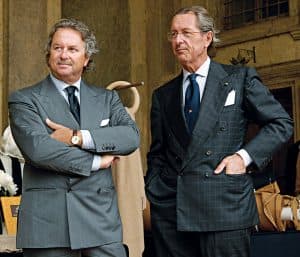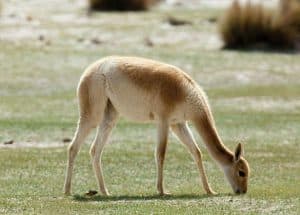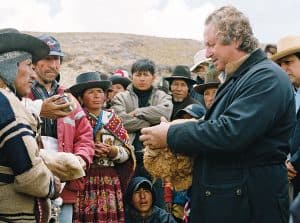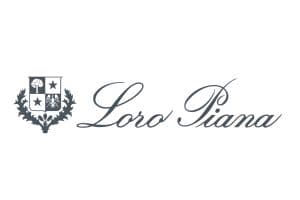Loro Piana
The Origin
Since 1924 the Loro Piana family has owned and operated their world-renowned textile business, and prior to launching the present firm, the family had been wool merchants since the early 1800s. To say that the Loro Pianas are experts in luxurious fabrics would be an understatement: as the world’s largest producer of both baby cashmere yarns and fabrics, Loro Piana has come to set the benchmark for the finest cloths, thanks to its tireless investment in raw materials and production, and continued technical innovation. Headquartered in Quarona, in the Valsesia district of north Italy, the firm has been producing its own collections of clothes and accessories since the 1980s, in addition to selling its clothes to leading couturiers and tailors, as well as to architects and interior designers.

Development
Originally from Trivero (a district in north Italy famous for textile production), the Loro Piana family started as merchants of wool fabrics at the beginning of the 19th century. In the second half of the 19th century, the family moved its activity to Valsesia and founded the Lanificio Fratelli Lora e Compagnia, followed by Lanificio di Quarona di Zignone & C. at the beginning of the 20th century. Franco Loro Piana, Pier Luigi’s father, started exporting fine fabrics in the 1940s and Pier Luigi and his older brother, Sergio, joined in the 1970s.
Since 2000, Loro Piana has sponsored an annual prize for the world’s finest bale of wool, which produces enough fabric for 50 men’s suits. Generally, it is won by an Australian or New Zealand woolgrower. In 2008, Loro Piana paid a record 48,000 cents per kilo for a bale of superfine merino wool averaging 12.5 micron produced by Peter and Greg Munsie and Phil and Judy Fittler of Uralla, New South Wales.
From the very beginning Loro Piana’s main motive has been the to provide the best quality and sophisticated product to its customers. Hence, the brand has done a lot of research and put a lot of attention to its raw materials to offer quality product to its customers. Some of its popular textiles include, Tasmanian®, in Italian, it has become a synonym of “light wool fabric” (it says so in the dictionary). This extraordinary worsted fabric takes its name from the island of Tasmania, south of Australia, because it was originally made using only the merino wools coming from its uncontaminated lands. Inspired by Priest Cloth®, a lightweight fabric that Loro Piana produced especially for ecclesiastical garments, Tasmanian® was created in the 1960s in response to the growing need for new and modern clothing that was light, versatile, crease-resistant, and crease-proof, and particularly suited for air-conditioned environments; Zelander®, a family of fabrics designed for cool and lightweight suits that are a pleasure to touch. They are made using select, exceptionally white and clean New Zealand merino wool, characterised by the length of its fibres and greater resistance to wear; Wish® is an elegant, refined fabric created from the best Super 170’s Australian merino wool of a fineness that never exceeds 15 micron; Loro Piana Zibeline®, the fabric’s characteristic wavy surface, glossy, “hammered” appearance and exceptional softness are created by a fascinating ancient finishing technique called teaseling.Using only specially dried teasel flowers grown in the Spanish Navarra, Loro Piana applies this ancient technique to transform the most precious fibres into extraordinary fabrics; Loro Piana Denim Flower® is an extraordinary fabric obtained from prized and certified organic cotton picked in the Valley of San Joaquin, California, considered the finest product available in the U.S.A. This fibre, harvested according to the more rigid biological principles that exclusively employ natural products, is exceptionally unique in terms of length, finesse and resistance; Record Bale, as unique and precious as jewels, these fabrics represent the best of the world’s production of select wools. Every year, Loro Piana buys the “Record Bales” of the year (the bale of the finest and best quality wool) in Australia and New Zealand. Each bale is enough to produce only a few dozen lengths of suiting fabric, which are offered in exclusive colours and designs, and distinguished by the special selvedge and label certifying the year of shearing and the origin and the fineness of the fibre; and finally, Loro Piana Zenit®, Inspired by Loro Piana’s passion for the world’s most outstanding fibres, Loro Piana Zenit® is a collection of refined, exclusive fabrics crafted from truly superlative raw materials, conceived as the basis for creating a complete wardrobe: suits, coats, jackets and blazers.
As a result of the declining health of Sergio Loro Piana, on 8 July 2013 LVMH purchased 80% of Loro Piana for €2 billion, the rest of shareholding remaining in Loro Piana family’s hands. Put and call options on the family’s 20% stake expired in 2016.
On 19 December 2013, Sergio Loro Piana passed away. In 2017 the Loro Piana family reduced their 20% ownership holdings to 15%. Specifically, Pier Luigi Loro Piana cut his holdings down to 5 percent, While the family of Sergio Loro Piana still owns their original 10 percent.


Loro Piana and Nature
Vicuña, the rarest, finest animal fibre in the world, comes from a small Andean camelid, whose story is closely bound up with that of Loro Piana. Graceful and lithe, the vicuña is known as the “Queen of the Andes”. It was revered and protected by the Inca Empire who did not permit it to be hunted, and the magnificent fibre obtained from its fleece could only be used by the emperor and his family. Yet the arrival of the Spanish conquerors led to a devastating massacre: eager to trade in its superlative fibre, the invaders almost brought the vicuña to extinction. Despite numerous conservation attempts over the years, poaching continued at an alarming rate: by the 1960s the number of vicuña had fallen to no more than five thousand, making it an endangered species.
It was around the mid twentieth century that Loro Piana became part of the vicuña’s story, driven by its enduring values and its passion for the world’s very finest raw materials. In the 1980s the company began working actively in Peru to safeguard the “fibre of the gods” and 1994 saw a key development, when Loro Piana, heading the International Vicuña Consortium, was granted the exclusive right to trade in vicuña fibre: the Peruvian campesinos (Peruvian farmers) were given the right to shear the vicuñas, undertaking to protect them from poachers. In 2008 it established the “Reserva Dr. Franco Loro Piana”, Peru’s first private nature reserve. In just five years the number of animals in the reserve has doubled, confirming the significance of Loro Piana’s contribution to saving this precious animal from extinction. But the work done for the vicuña in Peru was just the beginning: on the strength of 30 years’ experience in the field, in 2013 Loro Piana ventured into Argentina, purchasing the majority share in a company that has permission to shear the vicuñas that live wild in the area it owns the rights to, situated in the Catamarca province in north east Argentina.
Today Loro Piana is the world’s number one processor of vicuña, the finest fibre that can be legally obtained from an adult animal.
Finance
In December 2013, LVMH announced that Antoine Arnault would become chairperson of Loro Piana. The company produces about 5 million meters of fabric each year, and supplying textiles to other brands accounts for about a quarter of its revenue.
LVMH, the French group that owns Loro Piana majorly and world leader in luxury products, reported the figure for sales in 2017, increased by 13% to € 42.6 billion compared to 2016 (+ 12% for the same stores and at current rates).
All the companies in the group recorded double-digit growth, with the exception of the alcohol sector (+ 5% reported, + 7% with organic growth). In detail, the turnover of the fashion and leather goods businesses increased by 21% to 15,472 million (+ 13% at the same store and at current rates). The performance derives mainly from the launch of new brands and the birth of new collaborations. The reading of data for the last quarter of 2017 shows an increase in group turnover of 11% to 12,541 million (at constant stores and exchange rates), in line with the overall trend of last year.

Current Situation
The company has stores in Europe, North America, and Asia, totalling 132 stores worldwide. LVMH acquired brand made, Antoine Arnault the brand’s president and in 2016, Fabio d’Angelantonio was made the CEO.
In 2018 the Milan offices of Loro Piana will find a home in the Corriere della Sera building. Antonio Belloni, general manager of the LVMH group, declared, to which the textile company has been headquarter since 2013, during the inauguration in Florence of the Italian headquarters of the Ime-Istituto dei mestieri of excellence, a school of high-level artisan training of LVMH.“The central headquarter of Loro Piana – specified by the company – will remain in Piedmont in Quarona, in the province of Vercelli, while the Milan offices, now located in three locations (the main one is in via Turati), next year they will be unified in an empty space at the Palazzo del Corriere della Sera, Via Solferino 28″. Italy is thus becoming increasingly important for the LVMH group: “The global investment in the Peninsula, which also includes stores and headquarter, has always been around 100 million euros a year in the last five years”, he said.
In the period of 2022, the company recorded a result of €186.6 million.

